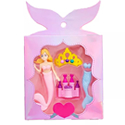THE MALE REPRODUCTIVE SYSTEM.
- Located in the pelvis region.
- Male reproductive system includes
- A pair of testes.
- Accessory ducts.
- Accessory glands.
- External genitalia
Testes:
- Located outside the abdominal cavity within a pouch called scrotum.
- Scrotum provides low temperature required for spermatogenesis.
- Each testis is about 4 to 5 cm length and 2 to 3 cm width.
- Each testis has about 250 compartments called testicular lobules.
- Each lobule contains one to three seminiferous tubules.
- Seminiferous tubules lined by male germ cells and Sertoli cells.
- Male germ cell undergoes meiosis and produce sperm.
- Sertoli cells provide nutrition to the germ cell and the sperm.
- In between the seminiferous tubule there is interstitial cell or Leydig cell.
- Leydig cells produce testicular hormones called androgen (testosterone).
Accessory ducts:
- Includes rete testis, vasa efferentia, epididymis and vas deferens.
- Seminiferous tubules open into vasa efferentia through rete testis.
- The vasa efferentia leaves the testis and open into epididymis.
- The epididymis leads to vas deferens that ascends to the abdomen through inguinal canal and loops over the urinary bladder.
- Vas deferens receives a duct from seminal vesicle and opens into the urethra as the ejaculatory duct.
- Urethra originates from the urinary bladder and extends through the penis to its external opening called urethral meatus.
Accessory glands:
- Includes
- Paired seminal vesicle
- A prostate gland
- Paired bulbourethral gland.
- Secretion of these glands constitutes the seminal plasma.
- Seminal plasma rich in fructose, calcium, and certain enzyme.
- Secretion of bulbo-urethral glands helps in lubrication of penis.
External genitalia:
- Penis is the external genitalia.
- It is made of special tissue that helps in erection of the penis to facilitate insemination.
- The enlarged end of penis is called glans penis.
- Glans penis is covered by a loose fold of skin called foreskin.
THE FEMALE REPRODUCTIVE SYSTEM
- Located in the pelvic region of the female.
- The female reproductive system includes:
- A pair of ovaries
- A pair of oviduct.
- Uterus
- Cervix
- Vagina
- External genitalia.
- A pair of mammary gland.
Ovaries:
- It is the primary female sex organs that produce the female gamete (ovum).
- It also produces several steroid hormones.
- The ovaries located in the lower abdomen.
- Each ovary is about 2-4 cm in length.
- Connected to the pelvic wall and uterus by ligaments.
- Each ovary is covered by thin epithelium which encloses the ovarian stroma
- The ovarian stroma has two zones
- A peripheral cortex.
- An inner medulla.
Oviduct:
- Oviducts, uterus and vagina constitute the female accessory ducts.
- Each fallopian tube is about 10-12 cm long and extends from the periphery of each ovary to the uterus.
- Close to the ovary the oviduct has a funnel shaped structure called infundibulum?
- The edges of the infundibulum possess finger-like projections called fimbriae, which helps in collection of the ovum after ovulation.
- The infundibulum leads to a wider part of the oviduct called ampulla.
- The last part of the oviduct is called isthmus which joined to uterus.


